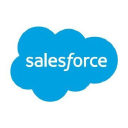We Built A $360K/Year Gmail Plugin That Helps People Manage Their Inbox
Hello! Who are you and what business did you start?
My name is Mohit Mamoria, and I like to call myself a “mad maker.” Right now, I am building Mailman – a tool that allows you to decide when and what emails should land in your inbox.
Our inboxes come without a guard or a shield. Anybody with our email address can interrupt us anytime they want. Mailman is that missing defender of your sanctity. Mailman is a year old company and makes about $30k in MRR.
The two of our biggest features coming this year are going to improve your newsletter-reading experience and automate redundant tasks that you do in your inbox, like auto-reply and auto-forward certain emails.
Here’s a glimpse of my life before and after Mailman.

What's your backstory and how did you come up with the idea?

Download the report and join our email newsletter packed with business ideas and money-making opportunities, backed by real-life case studies.

Download the report and join our email newsletter packed with business ideas and money-making opportunities, backed by real-life case studies.

Download the report and join our email newsletter packed with business ideas and money-making opportunities, backed by real-life case studies.

Download the report and join our email newsletter packed with business ideas and money-making opportunities, backed by real-life case studies.

Download the report and join our email newsletter packed with business ideas and money-making opportunities, backed by real-life case studies.

Download the report and join our email newsletter packed with business ideas and money-making opportunities, backed by real-life case studies.

Download the report and join our email newsletter packed with business ideas and money-making opportunities, backed by real-life case studies.

Download the report and join our email newsletter packed with business ideas and money-making opportunities, backed by real-life case studies.



























